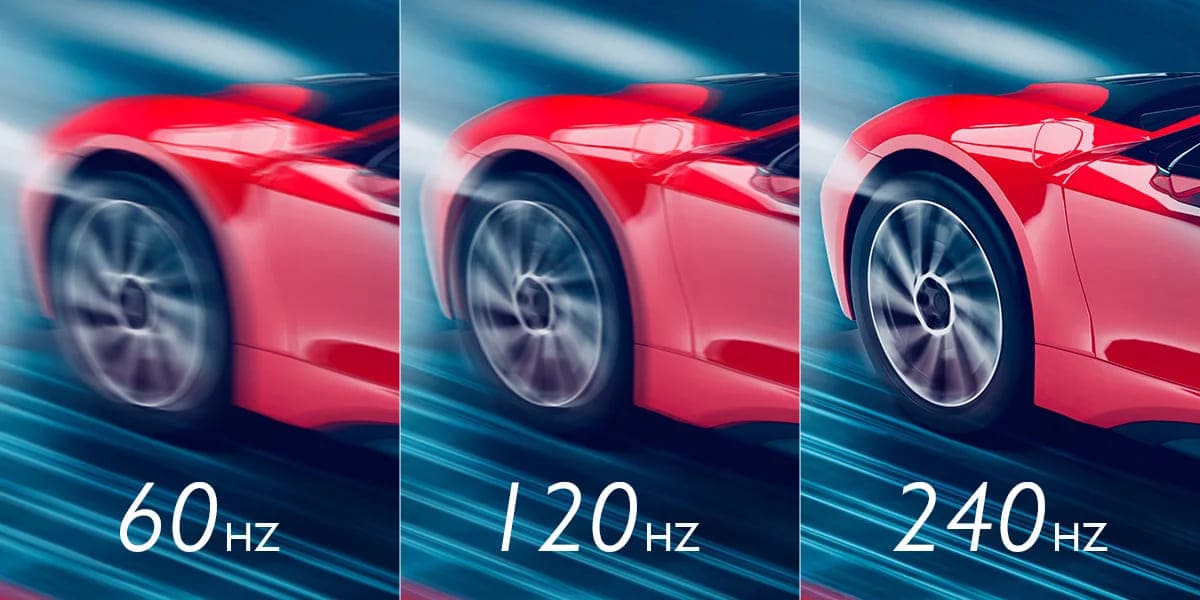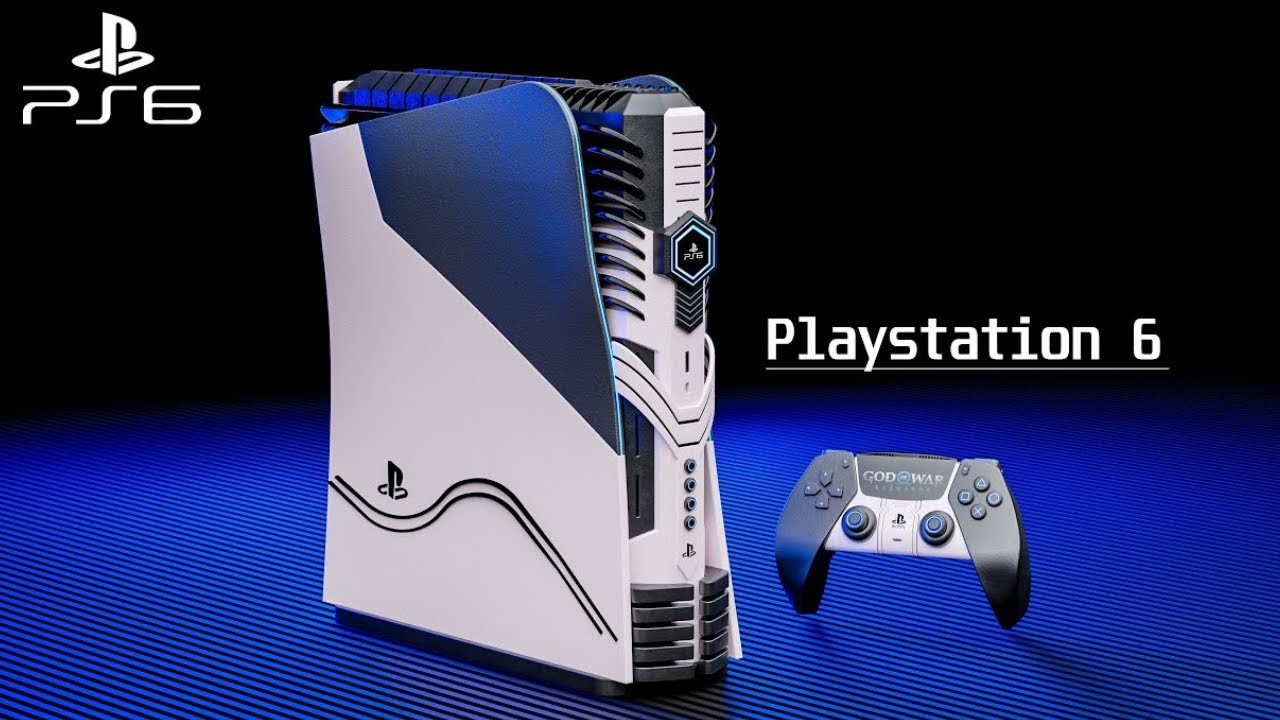In the world of smartphones, one feature that has gained significant attention over the years is the display refresh rate. While early smartphones came with a standard 60Hz display, manufacturers have pushed the envelope with high refresh rates, introducing displays at 120Hz, 144Hz, and even 240Hz. But what do these numbers really mean, and are they worth the investment for an average user? Are higher refresh rates just a marketing gimmick, or do they truly enhance your smartphone experience? This article delves deep into the differences between these high refresh rate displays, comparing 120Hz, 144Hz, and 240Hz to help you make an informed decision.
What is Refresh Rate?
Simply put, the refresh rate of a display refers to how many times per second the image on the screen refreshes or updates. This is measured in Hertz (Hz). For instance, a 60Hz display refreshes 60 times per second, a 120Hz display refreshes 120 times per second, and so on. A higher refresh rate means smoother motion and a more fluid visual experience.
Why High Refresh Rate Displays Matter in Phones
A high refresh rate enhances the overall user experience in various ways, from smoother scrolling to better gaming performance. This is particularly noticeable when interacting with elements like scrolling through social media, playing video games, or watching high-frame-rate videos. High refresh rate displays reduce motion blur and make transitions smoother, which can make daily tasks feel faster and more responsive.
The Evolution of Phone Displays: From 60Hz to 240Hz
Early Phone Displays and 60Hz Limitations
For the longest time, most smartphones came equipped with 60Hz displays. While this was sufficient for general tasks like texting, browsing, and watching videos, the limitations became clear during gaming and high-performance activities. A 60Hz display could only show 60 frames per second, which made the overall experience feel less smooth, especially in fast-paced games or during heavy multitasking.
The Transition to 120Hz
The first major jump in refresh rate came with 120Hz displays. With double the refresh rate of traditional displays, 120Hz phones made a noticeable improvement in the smoothness of animations, scrolling, and even gaming. Most flagship phones now feature 120Hz displays, offering a significant boost to performance while maintaining reasonable battery consumption.
Pushing the Boundaries: 144Hz and 240Hz Displays
Not satisfied with 120Hz, manufacturers began experimenting with even higher refresh rates. Phones featuring 144Hz displays entered the market, followed by phones sporting 240Hz screens. These displays offer even smoother transitions, but are they worth the higher price tag? Let’s explore this in greater detail.
120Hz Displays: The Sweet Spot
Why 120Hz is Ideal for Most Users
For most users, a 120Hz display offers the perfect balance between performance, visual quality, and battery life. The smoothness provided by a 120Hz display is more than enough for regular tasks like browsing, social media, and watching videos. Plus, it’s an ideal option for gamers who want a smoother gaming experience without sacrificing too much battery life.
Advantages of 120Hz Displays in Phones
-
Smoother Animations: Scrolling and transitions are far smoother than on a 60Hz display.
-
Enhanced Gaming Experience: Games that support higher frame rates perform better and look smoother on 120Hz displays.
-
Better Responsiveness: Touch input is more responsive, making it easier to interact with the phone.
Popular Phones with 120Hz Displays
Some of the best smartphones featuring 120Hz displays include:
-
iPhone 14 Pro and Pro Max
-
OnePlus 9 Pro
-
Samsung Galaxy S21 and S21 Ultra
-
Google Pixel 6 Pro
144Hz Displays: A Step Ahead
How 144Hz Compares to 120Hz in Real-World Use
While 120Hz is sufficient for most activities, 144Hz displays take the smoothness to the next level. The difference may be subtle for casual users, but for gamers and those who are looking for ultra-smooth performance, 144Hz is a noticeable improvement. It offers better responsiveness and more fluid animations.
Benefits of 144Hz Displays for Gaming and Productivity
-
Improved Gaming Performance: Games with high frame rates benefit from 144Hz displays, offering a more responsive and immersive experience.
-
Enhanced Multitasking: With 144Hz, moving between apps and navigating the UI feels even more fluid, increasing productivity for power users.
Top Phones Featuring 144Hz Displays
-
ASUS ROG Phone 5
-
Xiaomi Mi 11
-
Samsung Galaxy S20 FE
240Hz Displays: The Future of Ultra-Smooth Phone Displays
What Makes 240Hz Displays Stand Out?
A 240Hz display takes things to the extreme. While this refresh rate is mainly designed for competitive gamers, it offers an incredibly smooth visual experience. With 240Hz, you can enjoy ultra-fast response times and fluid gameplay in action-packed games.
Is 240Hz Worth the Investment?
For most users, 240Hz may be overkill, as the difference between 144Hz and 240Hz isn’t always noticeable unless you’re playing high-frame-rate games or using the device for competitive gaming. Additionally, a 240Hz display might drain battery life quicker than 120Hz or 144Hz options.
The Best Phones with 240Hz Displays
-
Xiaomi Black Shark 4 Pro
-
Lenovo Legion Phone Duel 2
-
ASUS ROG Phone 5 Ultimate
Comparing 120Hz, 144Hz, and 240Hz Displays: Pros and Cons
When it comes to high refresh rate displays, it’s important to understand how the refresh rate affects the overall performance and user experience. The differences between 120Hz, 144Hz, and 240Hz can be subtle or very noticeable, depending on your specific use case. To help you make the best choice for your needs, let’s break down the key pros and cons of each refresh rate, particularly focusing on three key aspects: battery life, gaming performance, and everyday use.
The Impact on Battery Life
One of the most crucial factors to consider when choosing a phone with a high refresh rate display is how it will impact your battery life. Higher refresh rates require more power to keep the screen running at that level of smoothness.
-
120Hz displays strike a perfect balance between smoothness and battery efficiency. The power consumption increase over a 60Hz display is moderate, but still significantly better compared to 144Hz or 240Hz options.
-
144Hz displays consume more battery, as they refresh 144 times per second. This increased refresh rate, while improving the smoothness of animations and gaming performance, results in higher energy demands.
-
240Hz displays are the most power-hungry of the three. Since the screen refreshes 240 times per second, it uses a lot more energy. This can lead to faster battery drain, particularly if you’re using your phone for gaming or other high-intensity tasks for extended periods.
Adaptive Refresh Rates:
Most modern flagship phones equipped with higher refresh rates come with adaptive refresh rate technology, which allows the phone to adjust the refresh rate based on your usage. For instance, when you’re watching videos or reading text, the phone may lower the refresh rate to conserve battery. When gaming or scrolling, the phone ramps up to 120Hz, 144Hz, or even 240Hz. This ensures that you’re getting the best of both worlds: smooth visuals when needed and improved battery efficiency when possible.
Gaming Performance: Which Refresh Rate Wins?
When it comes to gaming, the higher the refresh rate, the smoother and more responsive the experience becomes. However, it’s important to recognize that the benefits of higher refresh rates are much more noticeable when you’re playing fast-paced, competitive games.
-
240Hz displays reign supreme in the gaming world, offering the smoothest experience, especially for competitive gaming. In fast-paced games like PUBG or Call of Duty Mobile, the additional frames per second (FPS) can improve your response time, providing a more competitive edge. The smoothness and precision with a 240Hz screen make it ideal for eSports enthusiasts or gamers who demand the highest level of performance.
-
144Hz displays still deliver excellent gaming performance and are a huge step up from 120Hz. In casual gaming, the difference between 144Hz and 240Hz may not be as noticeable to the average gamer. However, if you’re into more action-packed titles or want a more fluid experience, the 144Hz display is a noticeable upgrade from 120Hz.
-
120Hz displays provide a solid gaming experience, offering smooth animations and responsiveness, but they are better suited for casual gamers or those who are not involved in ultra-competitive gaming. For general gaming, 120Hz is still a fantastic choice and is more than enough for most mobile games available today.
Gaming Performance Comparison:
| Refresh Rate | Ideal For | Advantages | Disadvantages |
|---|---|---|---|
| 120Hz | Casual Gamers | Sufficient smoothness for most games, responsive controls | Not as smooth as 144Hz or 240Hz, can feel laggy in fast games |
| 144Hz | Competitive Gamers | Ultra-smooth performance, better edge in competitive gaming | Increased battery consumption compared to 120Hz |
| 240Hz | Hardcore and eSports Gamers | The smoothest experience, reduces motion blur, and input lag | Significant battery drain, very high performance requirement |
Everyday Use and Productivity: Which is Best?
For most people, their phone is used for a wide range of tasks including browsing, social media, texting, and video watching. In this context, the refresh rate still plays an important role, but the differences may not be as dramatic.
-
120Hz is often considered the “sweet spot” for everyday use and productivity. The smoothness of scrolling through social media, browsing websites, and even navigating through the phone’s interface makes a noticeable difference without draining the battery too quickly. The difference in fluidity between 60Hz and 120Hz is far more noticeable than between 120Hz and 144Hz in day-to-day tasks.
-
144Hz provides a slightly more fluid experience for general use, but unless you’re constantly multitasking or switching between apps rapidly, the difference isn’t likely to blow you away.
-
240Hz displays, while impressive, are probably overkill for everyday tasks. Unless you’re heavily involved in video editing or other tasks that demand ultra-responsive touch input, the extra smoothness may not offer substantial benefits for your general phone use.
Everyday Use Comparison:
| Refresh Rate | Ideal For | Advantages | Disadvantages |
|---|---|---|---|
| 120Hz | Regular Users, Productivity | Smooth interactions, good battery life, responsive UI | Limited to 120Hz, not as smooth as higher rates for power users |
| 144Hz | Power Users, Multi-tasking | Smoother than 120Hz, great for multitasking | Increased battery drain compared to 120Hz |
| 240Hz | Performance Enthusiasts | Ultra-smooth scrolling and touch input, ideal for intensive tasks | Drains battery rapidly, not much advantage for typical use |
Which Refresh Rate is Best for You?
To sum it all up:
-
If you’re someone who enjoys smooth, responsive everyday phone use without compromising battery life, a 120Hz display is ideal for you. It offers the perfect balance between smoothness and efficiency, making it suitable for both casual use and gaming.
-
If you’re a competitive gamer or want a slightly more fluid experience for multitasking and productivity, the 144Hz display is an excellent middle ground. It delivers that extra smoothness, especially for high-speed tasks, while still being an energy-efficient choice compared to 240Hz.
-
If you’re all about the absolute smoothest experience and are into serious gaming or performance-intensive activities, then 240Hz is the ultimate choice. However, be prepared for faster battery drain, and remember that only a small percentage of users will fully benefit from such a high refresh rate.
Each refresh rate has its benefits, and choosing the right one depends on your priorities—whether it’s gaming, general use, or a combination of both.
Battery Life vs. Performance: Final Thoughts
While higher refresh rates can significantly improve the smoothness of interactions and the overall user experience, it’s essential to consider how this impacts battery life. For most users, 120Hz strikes the best balance between smoothness and battery efficiency, making it the go-to option. But if you prioritize gaming and ultra-smooth visuals, then 144Hz or 240Hz may be worth the trade-off, especially if you have a phone with adaptive refresh rates that help manage power consumption efficiently.
How to Choose the Right Refresh Rate for Your Phone
Factors to Consider: Use Case, Battery Life, and Performance
When choosing a phone with a high refresh rate, consider your primary use case. If you’re a gamer, you might lean towards 144Hz or 240Hz. For casual use, 120Hz should be more than enough. Also, keep in mind the battery life; higher refresh rates tend to use more power.
Future Trends: Will We See 300Hz or Higher?
While 240Hz is currently the highest refresh rate available in phones, it’s not far-fetched to imagine even higher refresh rates in the future. As technology advances and games become more demanding, it’s possible that 300Hz or even 500Hz displays may hit the market.
Conclusion: Which Refresh Rate Is Right for You?
Choosing between 120Hz, 144Hz, and 240Hz largely depends on how you plan to use your phone. For most people, 120Hz offers the perfect blend of performance and battery life. If you’re a competitive gamer or power user, 144Hz or 240Hz might be worth considering for that extra smoothness and responsiveness. Ultimately, the right refresh rate for you depends on your specific needs and preferences.
Read Also Top 7 Gaming Smartphones That Will Make Your Friends Scared to Play Against You
What is the difference between 120Hz and 144Hz refresh rates?
-
144Hz offers slightly smoother animations and better responsiveness than 120Hz, but the difference is often minimal for casual users.
Is a 240Hz display worth it for a smartphone?
-
A 240Hz display is ideal for competitive gamers, offering ultra-smooth performance, but for most users, 120Hz or 144Hz is sufficient.
How does the refresh rate impact battery life in phones?
-
Higher refresh rates consume more battery, with 240Hz displays being the most power-hungry. Most phones offer adaptive refresh rates to balance performance and battery life.
Does a higher refresh rate affect the overall phone performance?
-
A higher refresh rate improves the smoothness of animations, responsiveness, and gaming performance, but it doesn’t necessarily make the phone “faster” in other aspects.
What are some phones with 144Hz or 240Hz displays?
-
Phones like the ASUS ROG Phone 5 (144Hz) and Xiaomi Black Shark 4 Pro (240Hz) offer these high refresh rates for those seeking smoother performance.




